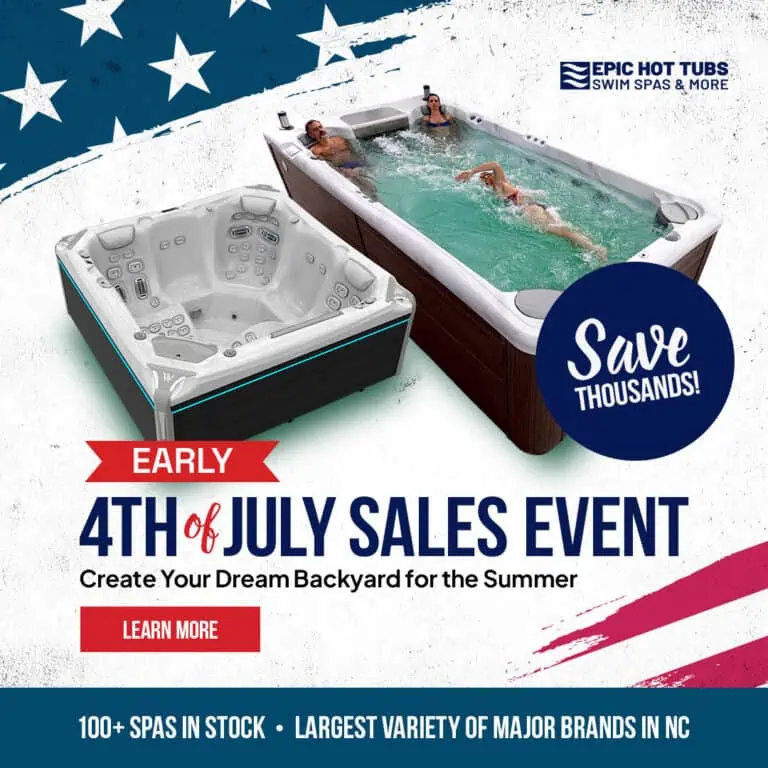Understanding how a hot tub works will help you can make better decisions about the…

How to Use a Hot Tub: The Ultimate Guide
A hot tub is your personal oasis for relaxation, muscle relief, and connection, and this guide provides everything you need for a safe and enjoyable experience.
A hot tub is your personal oasis, a place to unwind after a long day, soothe sore muscles, or connect with friends and family. Whether you’re a first-timer or a seasoned soaker, this comprehensive guide will give you all the info you need for a safe, relaxing, and enjoyable hot tub experience.

Preparing for Your Hot Tub Experience
Getting ready to hop in is just as important as the soak itself. This involves checking the water, a quick pre-soak clean-up, and setting the mood (if you’re feeling fancy).
Checking Water Chemistry and Temperature
Before you even dip a toe in the tub with water, check the water chemistry and water temperature. Think of it like this: if the water isn’t balanced, it can corrode the internal parts of your hot tub, just like acidic rain can damage a car.
Here’s the lowdown:
- pH: This measures how acidic or basic the water is. The ideal range is 7.2-7.8. Too low (acidic) can irritate your skin and damage the hot tub. Too high (basic) can make the sanitizer less effective and cause scaling.
- Alkalinity: This acts as a buffer for pH, keeping it stable. The ideal range is 80-120 ppm (parts per million).
- Sanitizer (Chlorine or Bromine): This kills bacteria and keeps the water clean. You’ll use either chlorine or bromine, not both. Ideal sanitizer levels will depend on the product you are using, so follow the manufacturer’s instructions.
How to test your water: Most hot tub owners use test strips. You dip a strip into the hot tub water, and it changes color. You then compare the colors on the strip to a chart on the bottle to determine the pH, alkalinity, and sanitizer levels. It’s a simple step, but it makes a huge difference in having trouble-free water.
The ideal water temperature for hot tub soaks is between 100°F and 104°F (38°C and 40°C). Anything hotter can be dangerous, especially for pregnant women and people with certain health conditions.
Pre-Soak Hygiene and Considerations
Before getting into the tub, it’s a good idea to shower. This quick rinse removes lotions, body oils, and other products that can cloud the hot tub water and throw off the water chemistry. It also keeps the tub water clean for everyone. Think about it: you wouldn’t jump into a swimming pool or swim spa after applying sunscreen, right? The same principle applies to hot tubs.
Hydration is also key. Drink plenty of water before, during, and after your hot tub soaks to avoid dehydration, especially in the hot summer months.
Setting the Mood (Optional)
Want to turn your hot tub into a true backyard retreat? Setting the mood can make a big difference. Soft music, subtle lighting (if your hot tub has it), and even aromatherapy (using oils designed for hot tubs) can enhance the relaxation time.
Entering and Using the Hot Tub
Now for the fun part!
Safe Entry and Exit
Safety first! Always use the steps or handrails to get in and out of the tub with water. The surfaces around a hot tub can be slippery, especially when wet.
Recommended Soak Times and Temperature Guidelines
Start with shorter hot tub soaks of 15-20 minutes, especially if you’re new to hot tubs. You can gradually increase the time as you get used to the hot tub temperature. Soaking for too long, especially at high temperatures, can lead to overheating. It’s important to listen to your body and get out if you start to feel dizzy or lightheaded. As mentioned, pregnant women should be especially cautious and consult their doctor before using a hot tub.
Using the Jets and Features
Hot tubs offer more than just warm water; they provide immersive hydrotherapy through powerful jets. These jets target specific muscle groups, providing relief for sore muscles and tired muscles and also offering natural pain relief. Familiarize yourself with how to adjust the jet pressure and direction. Some hot tubs also have other features, such as waterfalls, LED lighting, and even built-in sound systems for an enhanced audio experience.
Post-Soak Care and Considerations
Your post-soak routine is important for both your well-being and the hot tub’s maintenance.
Cool-Down and Rehydration
After your hot tub soaks, exit carefully and allow your body temperature to cool down gradually before getting dressed. Drink plenty of cold water to rehydrate.
Hot Tub Cover and Maintenance After Use
Immediately replace the hot tub cover after each use. This helps retain heat, saving you money on energy costs, and prevents debris from getting into the hot tub water. A locking cover also adds a layer of safety, especially if you have children or pets.
Hot Tub Safety and Etiquette
Hot tub safety and etiquette are crucial, especially when sharing a tub with water with others or during hot tub parties.
General Safety Guidelines
No running, jumping, or horseplay around the hot tub. This is a recipe for accidents. Never use alcohol or drugs while soaking, as they can impair your judgment and increase the risk of accidents. Always supervise children closely.
Of course, this is going in your back yard and not the public pool. So these are “the rules.” Bend them as it suits you and your family.
Health Considerations and Contraindications
People with certain health conditions, such as heart disease, high blood pressure, or diabetes, and pregnant women should consult their doctor before using a hot tub.
Hot Tub Etiquette (For Shared Hot Tubs)
If you’re sharing a hot tub, be respectful of others. Keep noise levels down, avoid splashing, and keep the area clean.
Maintaining Your Hot Tub for Optimal Use
Regular hot tub maintenance is essential for trouble-free water and a long-lasting hot tub.
Regular Water Testing and Balancing
Test your hot tub water at least twice a week. This simple step is the key to preventing common pool water woe and keeping your tub water crystal clear. Adjust the water chemistry as needed using appropriate hot tub chemicals. This will avoid issues like cloudy water, green water, and dirty spa water.
Cleaning and Filter Maintenance
Regular cleaning and hot tub filter maintenance are crucial. Rinse the hot tub filter with a Hose filter weekly to remove large debris. Monthly, give the filter cartridges a deep cleaning with a chemical soak. Every 3-4 months, drain the tub with water and clean the shell. This prevents buildup from surface oil and body oils and keeps the water clean.
Professional Maintenance and Service
While many hot tub maintenance tasks are simple steps you can do yourself, it’s a good idea to have a professional inspection at least once a year. They have extensive training and can catch potential problems you might miss. If you’re facing a complex repair or just don’t feel comfortable doing it yourself, call a professional.
Further Resources from Epic Hot Tubs
Want to learn more about hot tub ownership and maintenance? Epic Hot Tubs has a wealth of resources to help you keep your spa in top condition. Check out these helpful guides and services:
- Hot Tub Selection: Explore a wide variety of hot tubs to find the perfect fit for your needs.
- Troubleshooting Common Issues: Need help fixing a problem? Learn more about hot tub repair services.
- Balancing Chemicals: Understand the essentials of what chemicals do I need for a hot tub.
- Testing Water Chemistry: Learn how to properly perform hot tub water testing.
- Professional Water Care: Let the experts handle it with hot tub water care service.
- Cleaning Filters: Master the art of how to clean a hot tub filter.
- Energy Efficiency: Discover ways to save money with energy efficient hot tubs.
- Repair or Replace?: Decide what’s best for your situation with is it worth it to repair a hot tub.
- Maintenance Costs: Get an idea of typical expenses with cost of hot tub maintenance.
- Hydrotherapy Benefits: Learn about the advantages of hydrotherapy.
- Cloudy or Discolored Water: Find out why is my hot tub water cloudy and how to fix it.
The Last Splash
From understanding Water Chemistry to mastering hot tub maintenance, we hope this guide has given you the confidence to enjoy your hot tub to the fullest. Remember, regular care is the key to trouble-free water and a long-lasting spa. If you’re part of the Raleigh community and need assistance with your hot tub—whether it’s a quick question about chemical levels or a full hot tub maintenance service—the team at Epic Hot Tubs is here for you. We’re your local experts for all things hot tubs. Contact us today!
Frequently Asked Questions (FAQs)
What’s the ideal temperature for a hot tub?
The ideal water temperature is between 100°F and 104°F (38°C and 40°C). Anything hotter can be dangerous and is not recommended.
How long should I soak in a hot tub?
Start with 15-20 minute soaks, especially if you’re new to hot tubs. You can gradually increase the time as you get used to it. Avoid staying in for longer than 30 minutes at a time, especially at higher temperatures.
How often should I test my hot tub water?
You should test your hot tub water at least twice a week, and more often if you use the hot tub frequently. This will help you maintain proper Water Chemistry.
How do I know if my hot tub water is balanced?
Use test strips or a liquid test kit to check the pH, alkalinity, and sanitizer levels. Compare the results to the recommended ranges on the test kit packaging. If the levels are off, adjust them with the appropriate hot tub chemicals.
Do I need to shower before and after using a hot tub?
Yes, showering before helps remove lotions, oils, and other contaminants that can affect the water quality. Rinsing off after is a good idea to remove any remaining sanitizer from your skin.
Can pregnant women use hot tubs?
Pregnant women should consult their doctor before using a hot tub, as elevated body temperature can pose risks, especially during the first trimester.
How often should I drain and clean my hot tub?
It’s generally recommended to drain and clean your hot tub every 3-4 months, or more frequently if it’s used heavily.
What are the signs that my hot tub needs repair?
Look for unusual noises from the pump or motor, inconsistent water temperatures, decreased jet pressure, error messages on the control panel, visible leaks, or consistently cloudy water.
How can I keep my hot tub water clear?
Regular water testing and balancing, proper filter maintenance, and regular draining and cleaning are key to keeping your hot tub water crystal clear and avoiding issues like cloudy water or Green Water.
How do I find a reputable hot tub service technician?
Ask for recommendations from friends, neighbors, or local pool and spa stores. Check online reviews and look for technicians certified by industry organizations.

Ready to purchase a hot tub in NC?
Call us at 888-884-3742 or fill out the form below to get in touch with a member or our team.
Richard Horvath
Richard has been in the hot tub & spa industry for years. As a long hot tub & swim spa owner himself, Richard has a passion for helping homeowners create their dream backyard.



